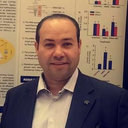Riboflavin attenuates lipopolysaccharide-induced lung injury in rats.
Ключевые слова
абстрактный
Riboflavin (vitamin B2) is an easily absorbed micronutrient with a key role in maintaining health in humans and animals. It is the central component of the cofactors flavin adenine dinucleotide (FAD) and flavin mononucleotide (FMN) and is therefore required by all flavoproteins. Riboflavin also works as an antioxidant by scavenging free radicals. The present study was designed to evaluate the effects of riboflavin against acute lungs injury induced by the administration of a single intranasal dose (20 μg/rat) of lipopolysaccharides (LPS) in experimental rats. Administration of LPS resulted in marked increase in malondialdehyde (MDA) level (p < 0.01) and MPO activity (p < 0.001), whereas marked decrease in glutathione (GSH) content (p < 0.001), glutathione reductase (GR) (p < 0.001) and glutathione peroxidase (p < 0.01) activity. These changes were significantly (p < 0.001) improved by treatment with riboflavin in a dose-dependent manner (30 and 100 mg/kg, respectively). Riboflavin (100 mg/kg, p.o.) showed similar protective effects as dexamethasone (1 mg/kg, p.o.). Administration of LPS showed marked cellular changes including interstitial edema, hemorrhage, infiltration of PMNs, etc., which were reversed by riboflavin administration. Histopathological examinations showed normal morphological structures of lungs tissue in the control group. These biochemical and histopathological examination were appended with iNOS and CAT gene expression. The iNOS mRNA expression was increased significantly (p < 0.001) and levels of CAT mRNA expression was decreased significantly (p < 0.001) in the animals exposed to LPS, while treatment with riboflavin significantly (p < 0.01) improved expression of both gene. In conclusion, the present study clearly demonstrated that riboflavin caused a protective effect against LPS-induced ALI. These results suggest that riboflavin may be used to protect against toxic effect of LPS in lungs.


